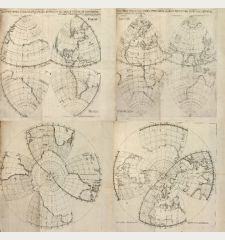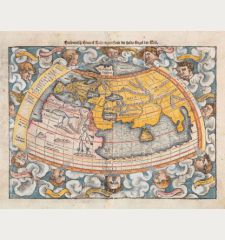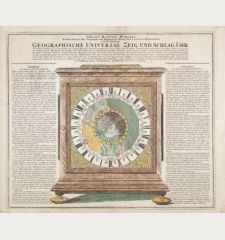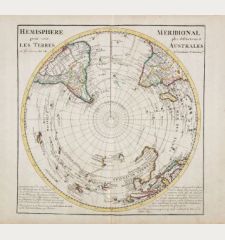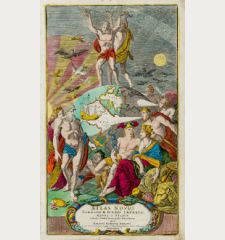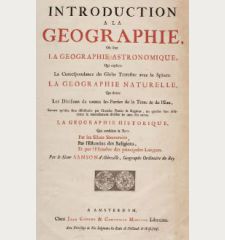Product successfully added to your shopping cart
There are 0 items in your cart. There is 1 item in your cart.
Orbis Terrae Compendiosa Descriptio Quam ex Magna Universali Gerardi Mercatoris ......
Rumold Mercator (*1541 - †1600)Reference 12648
Description
Rumold Mercator's Striking World Map.
Old coloured double hemispherical world map by Rumold Mercator. The only world map available to collectors to which Rumold's famous father Gerhard Mercator directly contributed during his lifetime (1512- 1594). It is based on Gerard Mercator's great world map of 1569, of which only three copies survive today.
The map first appeared in the edition of Strabo's Geographia published by Isaac Casaubon in Geneva in 1587. From 1595 Rumold's map was included in the editions of the Mercator Atlas and from 1604 it was used by J. Hondius for his Mercator-Hondius Atlas until the 1630s. The copper plate remained unchanged for all editions. This example comes from the 1609 French edition of the Mercator-Hondius Atlas.
Rodney Shirley in The Mapping of the World about this map:
The engraving is a model of clarity and neatness, with typical cursive flourishes to the lettering of the sea names. Surrounding the hemispheres is a strapwork border: between them at the top is an armillary sphere and at the bottom an elaborate compass rose.
With Gerard Mercator’s prominent south-west bulge to the coastline of South America. A large Terrae Australis in the south, with Tierra del Fuego as part of the southern continent. The unusual shape of the North Pole consists of a land mass surrounding the pole, divided by four radial rivers. A northwest passage is indicated with Anian regnum, the Strait of Anián, connecting the Pacific Ocean with the Atlantic Ocean in the north of the Americas. Quivira west of the Sierra Nevada, refers to the mythical gold country of Quivira, which the Spanish conquistador Francisco Vásquez de Coronado sought in 1541 in the western USA as far as Kansas. The mythical islands in the Atlantic, Brasil, Frisland, Verde, S. Brandain and Drogeo are also marked.
The Southeast Asian islands in the Eastern Hemisphere are already quite well depicted for its time. Japan, however, is still erroneously drawn as a large round island. The legendary names Lucach, Beach provincia aurifera (Land of Gold) and Maletur (Kingdom of the Malays) in the large southern continent of Terrae Australis go back to Marco Polo.
A box on top contains the title, dated to 1587 (Anno M.D.LXXXVII). Decorated with a sailing ship and two sea monsters.
Details
| Cartographer | Rumold Mercator |
| Title | Orbis Terrae Compendiosa Descriptio Quam ex Magna Universali Gerardi Mercatoris ... Rumoldus Mercator fieri curabat Ao. M.D.LXXXVII |
| Publisher, Year | Jodocus Hondius, Amsterdam, 1587 [1609] |
| Plate Size | 29.0 x 52.3 cm (11.4 x 20.6 inches) |
| Sheet Size | 34.5 x 55.7 cm (13.6 x 21.9 inches) |
| Reference | Shirley, R. W.: The Mapping of the World, No. 157; Van der Krogt, P.: Koeman's Atlantes Neerlandici, 0001:1A. |
Condition
Cartographer
Images to Download
If you like to download the image of this map with a resolution of 1200 pixels, please follow the link below.
You can use this image for publication on your personal or commercial websites for free if you set a link to this website. If you need photographs with a higher resolution, please contact us.
World Maps - Mercator, Rumold - Orbis Terrae Compendiosa Descriptio Quam...

![Rumold Mercator: Orbis Terrae Compendiosa Descriptio Quam ex Magna Universali Gerardi Mercatoris ... Rumoldus Mercator fieri curabat Ao.... Antique Maps, Mercator, World Map, 1587 [1609]: Orbis Terrae Compendiosa Descriptio Quam ex Magna Universali Gerardi Mercatoris ... Rumoldus Mercator fieri curabat Ao....](https://www.vintage-maps.com/3834-large_default/mercator-world-map-1587-1609.jpg)
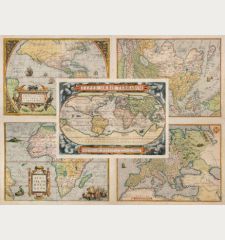
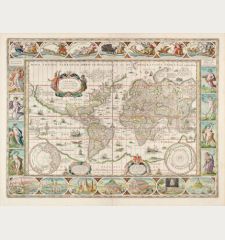
![Ch'onha Chido [Atlas of all under Heaven] Ch'onha Chido [Atlas of all under Heaven]](https://www.vintage-maps.com/3336-home_default/anonymous-korean-manuscript-atlas-chonha-chido-1820.jpg)
